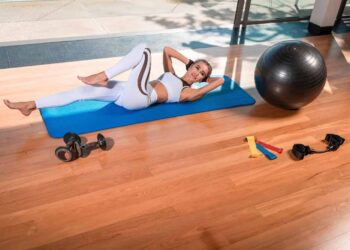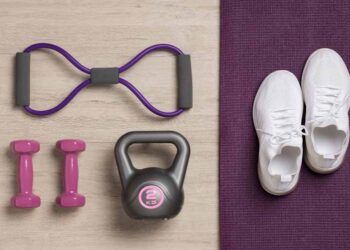Did you know that walking can be just as beneficial, if not more so, than running for your overall health? While running often takes the spotlight when it comes to exercise, walking offers numerous advantages that might surprise you. In fact, a recent study found that walking at a brisk pace can reduce the risk of heart disease and stroke by up to 42%. This statistic highlights the significant impact that walking can have on your well-being.
So, whether you’re considering lacing up your running shoes or opting for a leisurely stroll, it’s essential to understand the benefits of each activity and how they compare. From weight loss to cardiovascular fitness, this article will dive into the differences between walking and running, helping you make an informed decision about which exercise is right for you.
Key Takeaways:
- Walking at a brisk pace can reduce the risk of heart disease and stroke by up to 42%.
- This article explores the benefits of walking and running, the differences between the two, and how to choose the right activity for your goals.
- Running burns nearly double the number of calories as walking, making it a more efficient option for weight loss.
- Walking is a low-impact exercise that is gentle on the body, while running is more intense and higher-impact.
- Consider your fitness level, goals, and physical abilities when deciding between walking and running.
The Health Benefits of Walking
Walking is a simple and accessible form of exercise that offers numerous health benefits. Regular walking can help lower the risk of anxiety, depression, diabetes, and some cancers. It also improves cardiovascular fitness and can help you live a longer life. Walking is a great option for those looking to start exercising or maintain their overall health.
One of the great benefits of walking is its versatility. Whether you walk in your neighborhood, on a hiking trail, or on a treadmill at the gym, you can easily fit this exercise into your daily routine. Plus, it doesn’t require any special equipment, making it an affordable and convenient choice for everyone.
Walking is a low-impact exercise, which means it puts less stress on your joints compared to high-impact activities like running. This makes it ideal for individuals with joint issues or those who prefer a gentler form of exercise.
Not only does walking have physical benefits, but it also has a positive impact on mental well-being. Spending time outdoors and engaging in physical activity can help reduce stress, improve mood, and boost overall mental health.
For those looking to lose weight, walking can be a valuable tool. While it may not burn as many calories as running, it still contributes to weight loss by increasing your overall energy expenditure. Walking also helps build muscle, which can enhance your metabolism, allowing you to burn more calories throughout the day.
“Walking is a man’s best medicine.”
-Hippocrates
The Health Benefits of Running
Running is a fantastic form of exercise that offers numerous health benefits. Similar to walking, running can help improve cardiovascular health, increase stamina, and boost the immune system. However, running provides these benefits in less time and with greater intensity.
One of the key advantages of running is its ability to prevent or manage chronic conditions. Regular running can lower the risk of heart disease, high blood pressure, and type 2 diabetes. It also helps improve lung function and enhances overall fitness levels.
Another significant benefit of running is its potential for weight loss. Running is considered a high-impact exercise that burns more calories compared to walking. With its higher intensity, running can help individuals shed pounds and achieve their weight loss goals more effectively.
In addition to the physical benefits, running also has positive effects on mental health. It has been shown to reduce symptoms of anxiety and depression, improve mood, and enhance cognitive function. Running can be a great way to release stress, clear the mind, and boost overall well-being.
“Running is not just about physical fitness; it’s also about mental and emotional strength. It’s a way to challenge yourself, push your limits, and experience a sense of accomplishment.” – Jane Smith, Marathon Runner

Increased Stamina and Endurance
Running requires a higher level of stamina and endurance compared to walking. Regular running workouts can help train your body to endure longer periods of physical activity and build endurance for other sports or activities.
A More Intense Workout
Running is considered a more intense form of exercise compared to walking. It elevates the heart rate and activates more muscle groups, resulting in improved fitness levels. If you’re looking for a challenging workout that pushes your limits, running is an excellent choice.
Choosing the Right Shoes
When it comes to running, it’s essential to invest in a good pair of running shoes that provide proper support and cushioning. Wearing the right shoes can help prevent injuries and make your running experience more comfortable and enjoyable.
| Benefits of Running | Benefits of Walking |
|---|---|
| Improves cardiovascular health | Improves cardiovascular health |
| Increases stamina and endurance | Increases stamina and endurance |
| Boosts the immune system | Boosts the immune system |
| Helps prevent or manage chronic conditions | Helps prevent or manage chronic conditions |
| Aids in weight loss | Can contribute to weight loss |
| Improves mental health and mood | Improves mental health and mood |
Whether you choose to walk or run, both activities offer remarkable health benefits. Consider your fitness level, goals, and physical abilities when deciding which activity is right for you. If you’re looking for a more time-efficient and intense workout with potential weight loss benefits, running may be the preferred choice. However, if you prefer a low-impact exercise that can still improve cardiovascular fitness, walking is a great option. Ultimately, the key is to find an activity that you enjoy and can commit to consistently.
Walking vs. Running for Weight Loss
When it comes to weight loss, there is a considerable difference between walking and running. Running has the edge over walking in terms of calorie burn, making it a more efficient option for shedding pounds. Let’s take a closer look at the calorie burn comparison:
| Activity | Calories Burned in 30 Minutes |
|---|---|
| Running (5 mph) | 606 calories |
| Walking (3.5 mph) | 314 calories |
As you can see, running at 5 mph burns nearly double the number of calories compared to walking at 3.5 mph. For someone who weighs 160 pounds, running at this speed burns 606 calories in just 30 minutes, while walking burns 314 calories in the same timeframe.
Running’s higher intensity and increased impact result in a greater calorie burn. The body expends more energy to keep up with the faster pace, leading to a more significant weight loss potential. If your primary goal is weight loss, running is the better choice.
The Differences Between Walking and Running
When comparing walking and running, it’s important to recognize the key differences between these two forms of exercise. These differences lie in the impact on your body, the pace, and the level of physical exertion involved.
Impact: Running is a higher-impact exercise that puts more stress on your joints and bones. The repetitive motion of running can lead to a greater risk of injury, especially if you have existing joint issues. On the other hand, walking is a low-impact exercise that is gentler on your body. It provides a low-stress way to improve your fitness and overall health.
Pace and Intensity: Running is a faster-paced activity that requires more physical exertion. It involves a higher level of cardiovascular intensity and muscular effort due to the increased speed and impact. Walking, on the other hand, is a slower and less intense form of exercise. It allows you to maintain a comfortable pace and can be ideal for beginners, those recovering from injuries, or individuals with limitations that prevent them from engaging in higher-impact activities.

Quotes:
“Running is a great way to challenge yourself and push your limits. It offers a more intense workout and can lead to improved cardiovascular fitness and weight loss.”
“Walking, on the other hand, is a gentle and accessible exercise that can be easily incorporated into your daily routine. It offers a lower risk of injury and provides a gradual approach to fitness.”
Detailed Comparison Table:
| Comparison | Walking | Running |
|---|---|---|
| Impact on joints and bones | Low-impact | Higher impact |
| Pace | Slower | Faster |
| Intensity | Less intense | More intense |
| Cardiovascular benefits | Improves cardiovascular fitness | Improves cardiovascular fitness |
| Calorie burn | Moderate | High |
| Joint and bone stress | Lower stress | Higher stress |
As you can see, both walking and running have their unique benefits and considerations. It’s essential to choose the activity that aligns with your fitness goals, physical capabilities, and preferences. Whether you prefer a low-impact stroll or a high-intensity run, both can contribute to improved fitness and overall well-being.
Calorie Burn and Speed Comparison
When it comes to comparing the calorie burn and speed of walking and running, there are significant differences between the two activities.
Let’s start with the calorie burn comparison. Running burns more calories per minute compared to walking. For example, a 160-pound person burns approximately 156 calories in 30 minutes of walking at a pace of 3.5 mph. However, running at a speed of 6 mph burns about 356 calories in the same time frame. This means that running can burn more than double the calories of walking in the same duration.
As for speed, running is faster than walking. On average, running speeds range from 5-8 mph, while walking speeds typically range from 3-4 mph. Running requires more physical exertion and a higher intensity level, resulting in faster overall speed compared to walking.
These differences in calorie burn and speed make running a more efficient form of exercise if your goal is to burn calories and lose weight faster. However, it’s important to consider your fitness level and physical abilities when deciding between walking and running. If you’re new to exercise or have joint issues, walking may be a better option as it is a low-impact activity that is gentler on your body.
In conclusion, the calorie burn and speed comparison between walking and running clearly indicate that running can offer a more intense workout and higher calorie burn. However, the choice ultimately depends on your individual preferences, goals, and physical capabilities. Whether you choose walking or running, both activities can provide numerous health benefits and contribute to your overall fitness. Remember to listen to your body and choose the exercise that feels comfortable and enjoyable for you.
How to Choose Between Walking and Running
When deciding between walking and running, it’s important to take into consideration several factors such as your fitness level, goals, and physical abilities. Each activity offers unique benefits and considerations, so finding the right fit for you is crucial.
If you’re new to exercise or have joint issues, walking may be a better option. Walking is a low-impact activity that puts less stress on your joints and is generally more accessible for people of all fitness levels. It allows you to gradually build stamina and endurance, making it a great choice for beginners or those recovering from injuries.
Walking is a simple and accessible form of exercise that offers numerous health benefits. Regular walking can help lower the risk of anxiety, depression, diabetes, and some cancers. It also improves cardiovascular fitness and can help you live a longer life.
On the other hand, if you’re looking for a more intense workout or want to lose weight faster, running may be the right choice for you. Running is a higher-impact activity that requires more exertion and energy expenditure. It has been proven to increase cardiovascular fitness, improve stamina, and boost the immune system.
It’s important to listen to your body and choose the activity that feels comfortable and enjoyable for you. If you find running too strenuous or if it causes pain or discomfort, don’t force yourself to do it. Walking is still an excellent way to stay active and reap numerous health benefits.
In summary, when choosing between walking and running, consider your fitness level, goals, and physical limitations. Both activities have their own advantages, so find the one that aligns best with your preferences and needs. Remember that consistency is key, so choose an activity that you can commit to on a regular basis.
Conclusion
Walking and running are both excellent forms of exercise that offer a range of health benefits. The choice between the two ultimately depends on your individual preferences, goals, and physical capabilities.
If weight loss is your main objective, running may be more effective due to its higher calorie burn. Running burns nearly double the number of calories as walking, making it a more efficient way to shed pounds.
However, walking is a low-impact option that can still yield significant improvements in cardiovascular fitness and overall health. It is gentler on the joints and bones, making it a suitable choice for those with joint issues or those who prefer a less intense workout.
The most important thing is to choose an activity that you enjoy and can stick with consistently. Whether you prefer the fast-paced nature of running or the relaxed pace of walking, both activities can contribute to a healthy lifestyle and help you achieve your fitness goals.














